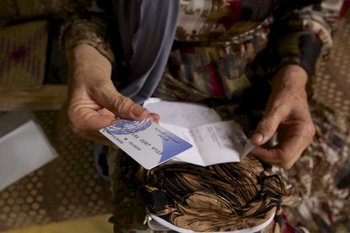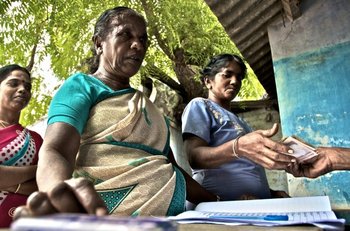Use of cash and voucher assistance (CVA) has soared globally, accounting for nearly 18 percent of international humanitarian assistance in 2019 before the global Pandemic, up from 8 percent in 2015. This growth is expected to continue and CVA has played a key role in protecting livelihoods at scale during the COVID-19 Pandemic. Greater use of CVA has increased the need to understand how to ensure CVA programming is as effective, efficient, and accountable as possible.
Cash is a form of assistance which cuts across sectors and has driven the use of innovative technologies and partnerships in humanitarian response. Yet this comes with strings attached, particularly when it comes to evaluating cash. In our new paper “Cashing in: Turning challenges into opportunities when evaluating cash assistance” ALNAP and CaLP have come together to identify and analyse key issues in evaluation of cash assistance. Although many of these may not be new or unique to CVA evaluation, we would like to put forward five key considerations as food for thought.
- Capturing the range of CVA outcomes
The unrestricted nature of CVA and integrated programming combining cash and other forms of assistance provides the potential for a wide range of outcomes. This means evaluators and evaluation managers may need to analyse the ‘complementarity’ of different components of integrated programming and consider which outcomes to prioritise to enable a manageable scope of study.

2. Evaluating multipurpose cash assistance (MPC)
Multipurpose cash assistance (MPC) enables flexibility for households to spend according to their own priorities to cover their basic needs. This challenges sector-specific approaches to evaluation, as the intended outcomes of MPC can be hard to define, requiring evaluators to consider broader concepts of improved ‘well-being’ and the ability for CVA recipients to meet their basic needs. While understanding of how to monitor and evaluate MPC is improving, questions remain about how to define and compare the concept of ‘well-being’ in different contexts.
3. Evaluating collaborative approaches
Collaboration between partners providing cash assistance is increasingly common, with more organisations working in consortium and working groups to deliver CVA. Where collaborating organisations have shared outcomes for joint achievement, evaluators will need to manage a joint evaluation. These types of evaluations provide opportunities to assess efforts across multiple organisations and the effectiveness of joint programming

4. Evaluating programmes linking CVA with social protection
Although efforts to link CVA to government social protection initiatives are growing, it is still a relatively new approach involving a different range of stakeholders in humanitarian response. Evaluators need to consider how best to explore sensitive social protection themes in cash assistance evaluations, as well as the difference in objectives and ways of working between government stakeholders and humanitarian agencies.
Evaluators also need to negotiate stringent data protection requirements when working with government information, and there may be limitations on which data can be shared and the variables that have been captured. It is important to examine how data has been collected, stored, shared and accessed within programmes linking CVA and social protection, and evaluators should be well versed on data protection issues.
5. Evaluating service provider partnerships and data responsibility
Private sector financial service providers, payment service providers, and mobile network operators play a critical role in CVA, often directly interacting with recipients. Therefore, evaluators should consider assessing the timeliness of payments, effectiveness of service provider operated feedback and complaints systems, and the selection process for service provider partners. This can broaden the scope of the evaluation and require evaluators to work with new groups of stakeholders that they may not have experience of engaging with previously.
The type of transaction data that can potentially be accessed presents opportunities for evaluative data analysis that have not previously been available in the humanitarian sector. There are also significant risks which evaluators should consider, including the responsible use of data by both humanitarian agencies and service providers, and the potential for digital exclusion.
Final reflections
Evaluation of cash assistance requires evaluators to carefully consider the boundaries of evaluation scope and to identify appropriate outcome indicators and methods for assessing multisectoral assistance, and the effectiveness of collaborative approaches. It also requires evaluators to examine complex relationships with government stakeholders and service providers. Although these challenges are not unique, they are accentuated in CVA evaluation, and ALNAP and CaLP’s latest study seeks to stimulate discussion amongst evaluators on ways to address these issues.


